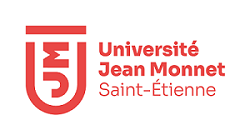Dynamics of nanostructure formation on metal surfaces induced by ultrashort laser irradiation
Résumé
Often under ultrafast laser excitation, structuring of materials on submicron scales occurs via characteristic nanoscale periodic self-arrangement of matter on irradiated surfaces. Nanostructured features are strongly influenced by inhomogeneous light coupling on the local crystal orientation, the nascent topology and the complex material response as the surface material undergoes conditions of extreme nonequilibrium for several picoseconds. In that context, understanding the nature of spatial localization of the absorbed energy requires the knowledge of the transient variation of optical response during irradiation. To provide insights into the dynamics of optical response of a metallic surface, pump-probe ellipsometric measurements and ab initio calculations of transport properties have been coupled, shining a new light on the recurring problem of yet unknown optical coupling during Laser-Induced Periodic Surface Structure (LIPSS) formation under ultrashort excitation. Calculations are carried out in the framework of the density functional theory associated to quantum molecular dynamics. The approach allows elucidating the influence of carrier nonequilibrium on optical properties. Simulation of the 3D energy deposition profiles on excited materials based on Finite Difference Time Domain method is then performed to depict the laser pulse interaction with an initially random distributed rough surface, revealing a competition between several periodic energy deposition patterns where light flux can be channeled depending on the nonequilibrium optical properties. Following such localized photoexcitation arrangements, the sub-surface region undergoes phase transformation and thermo-mechanical change at the nanoscale, depending on the surface crystal orientation. Dedicated electron backscatter diffraction experiments reveal that lattice defects are distributed inhomogeneously in the LIPSS profiles and the subsurface region, indicating that LIPSS formation is one of the different relaxation ways. A specific focus involving complex laser excitation mechanisms will be made to the interpretation of this inhomogeneous surface response.

